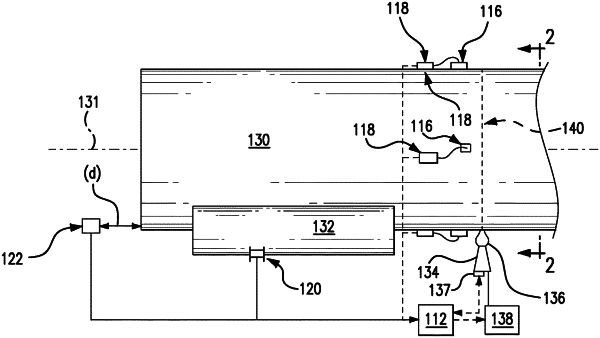| CPC B23K 26/034 (2013.01) [B23K 9/0956 (2013.01); B23K 9/1062 (2013.01); B23K 11/252 (2013.01)] | 20 Claims |

|
1. A system for monitoring a heating operation on a component by a flame torch, the system comprising:
a first sensor that is operatively engaged with the component, the first sensor being configured to detect rotation or non-rotation of the component and produce a first electrical signal that is indicative of the rotation or non-rotation of the component;
a second sensor that is operatively engaged with the component, the second sensor being configured to detect a temperature of the component and produce a second electrical signal that is indicative of the temperature of the component;
a processor that is configured to receive the first electrical signal and produce an audible alarm based on the first electrical signal indicating non-rotation of the component, and receive the second electrical signal and produce an audible alarm when the temperature of the component is greater than a pre-determined temperature value; and
a third sensor that is configured to detect a presence or an absence of a flame and produce a third signal that is indicative of the presence or the absence of the flame, wherein the processor is configured to receive the third electrical signal and produce an audible alarm based on the third electrical signal indicating the absence of the flame.
|